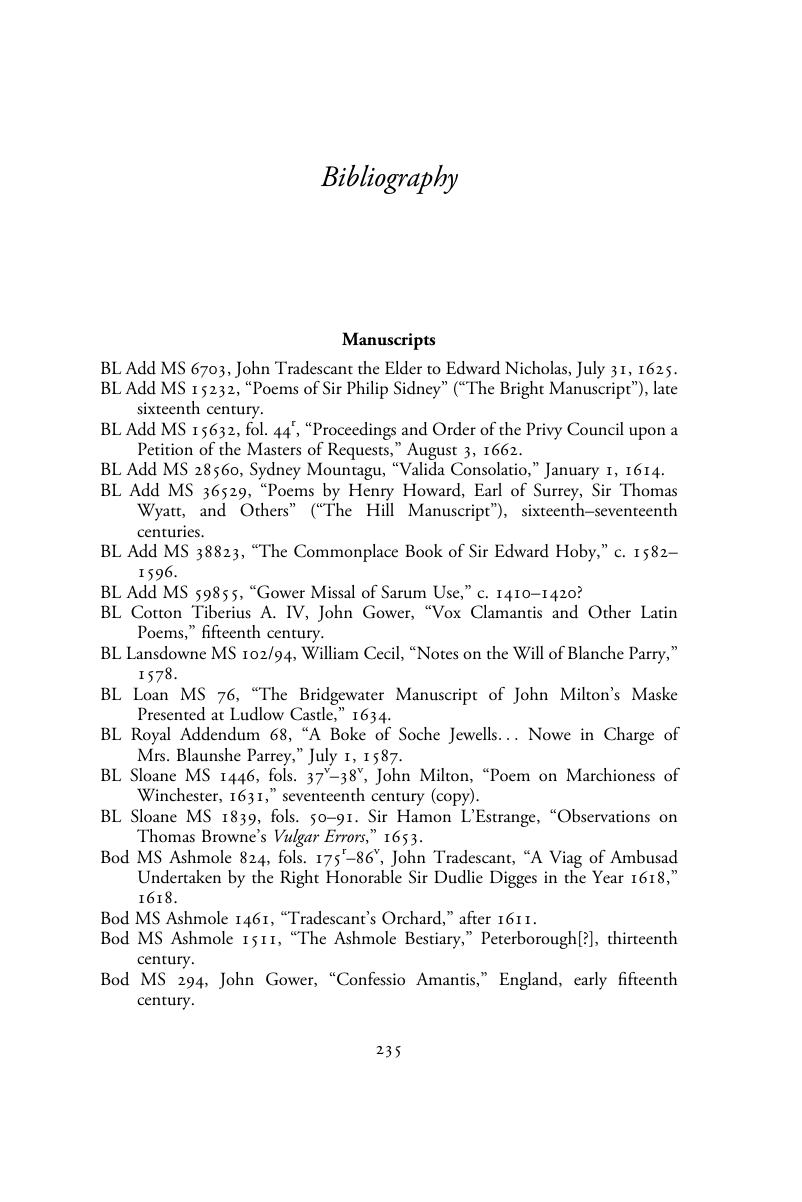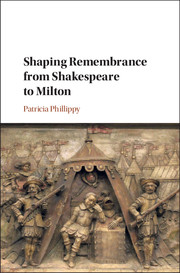Book contents
- Shaping Remembrance from Shakespeare to Milton
- Shaping Remembrance from Shakespeare to Milton
- Copyright page
- Dedication
- Contents
- Illustrations
- Acknowledgments
- Abbreviations
- Introduction
- Part I “Signes of Remembrance”
- Part II “Monuments of Antiquitie”
- Conclusion
- Bibliography
- Index
- Plate Section (PDF Only)
- References
Bibliography
Published online by Cambridge University Press: 25 May 2018
- Shaping Remembrance from Shakespeare to Milton
- Shaping Remembrance from Shakespeare to Milton
- Copyright page
- Dedication
- Contents
- Illustrations
- Acknowledgments
- Abbreviations
- Introduction
- Part I “Signes of Remembrance”
- Part II “Monuments of Antiquitie”
- Conclusion
- Bibliography
- Index
- Plate Section (PDF Only)
- References
Summary

- Type
- Chapter
- Information
- Shaping Remembrance from Shakespeare to Milton , pp. 235 - 263Publisher: Cambridge University PressPrint publication year: 2018



